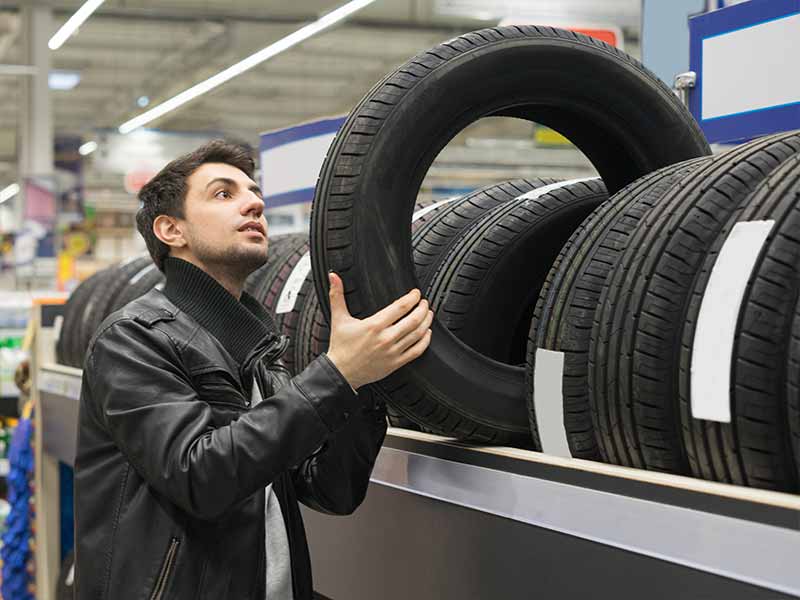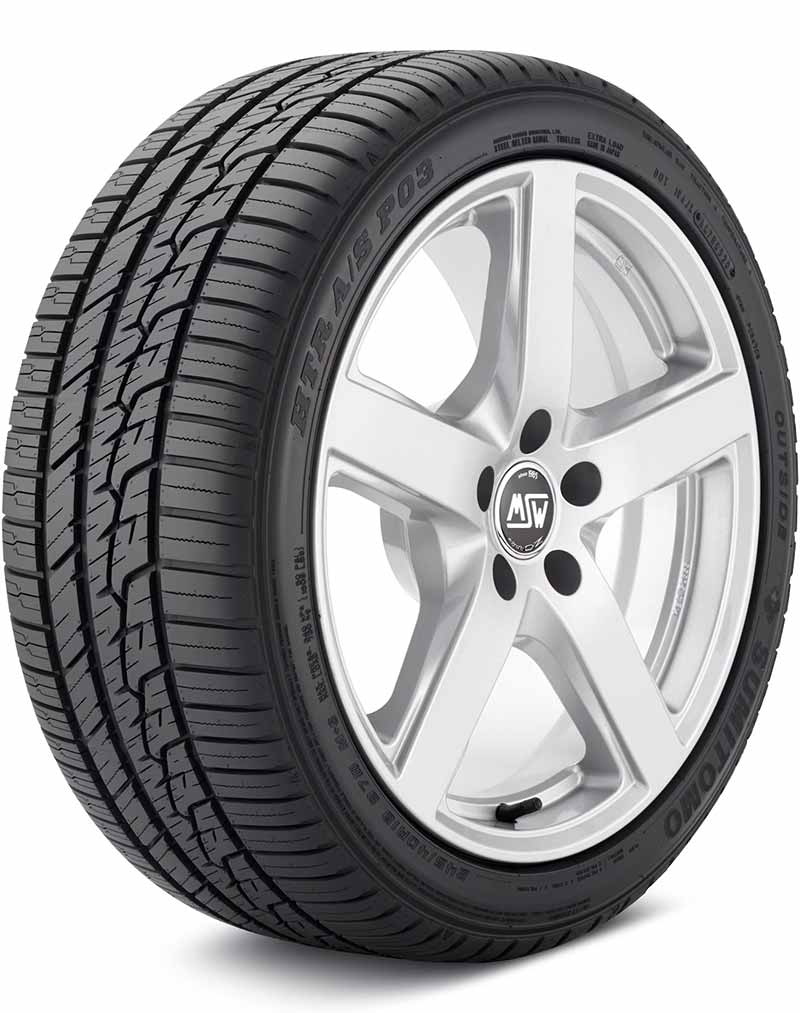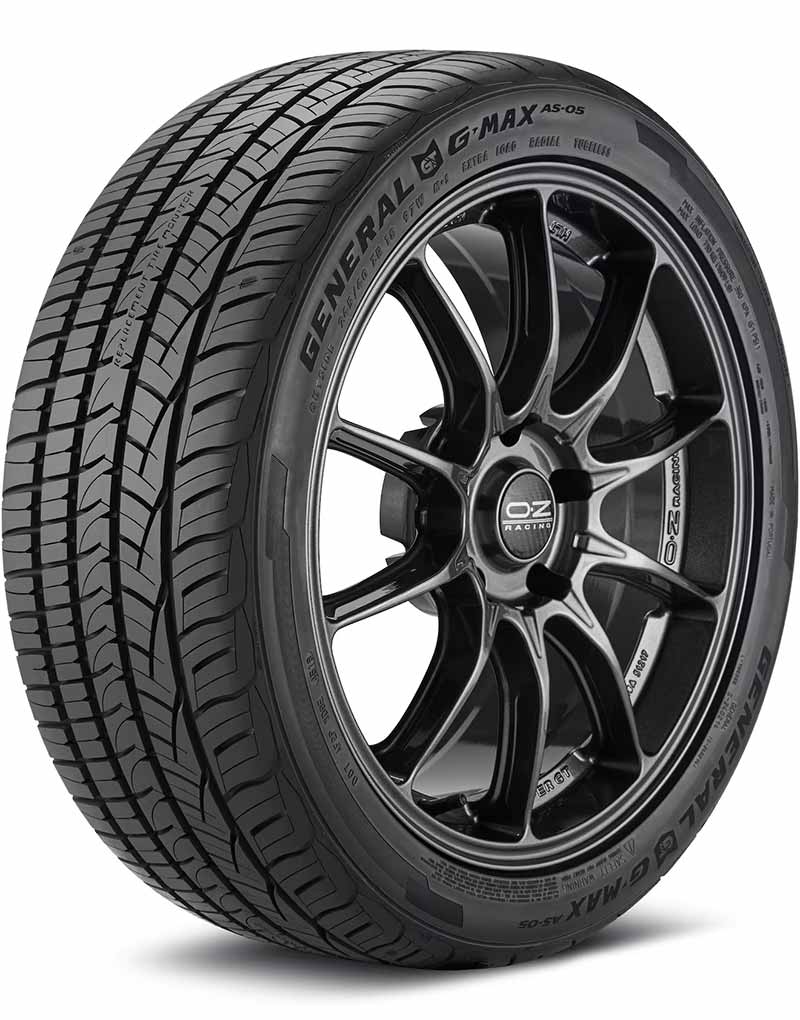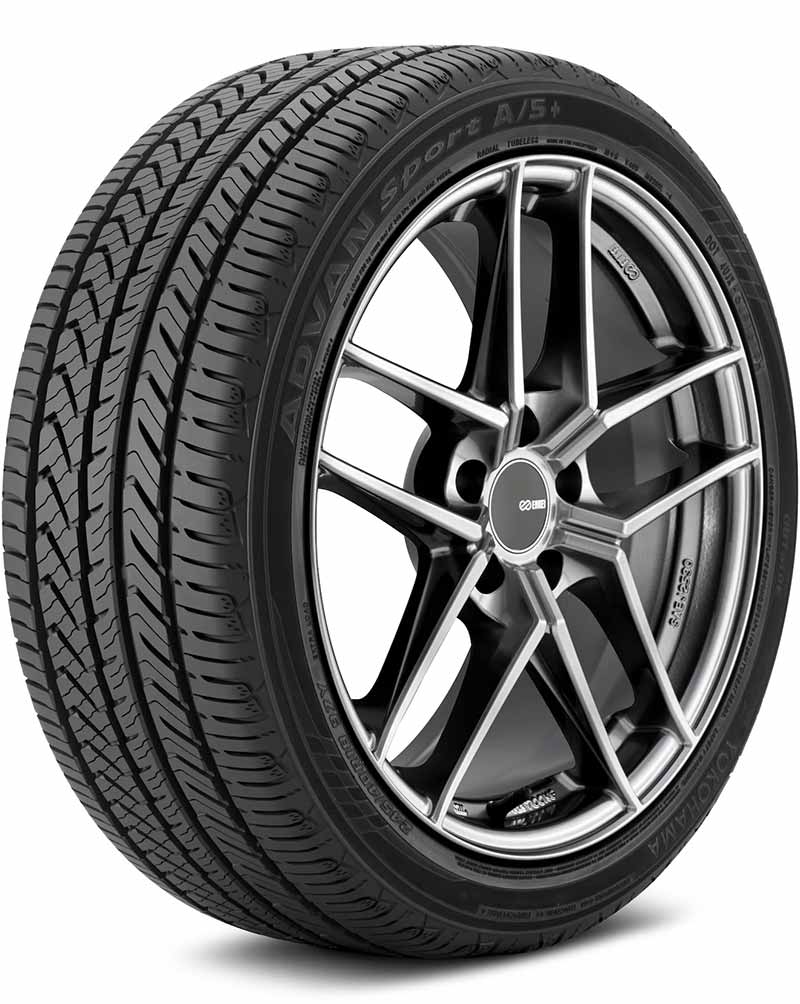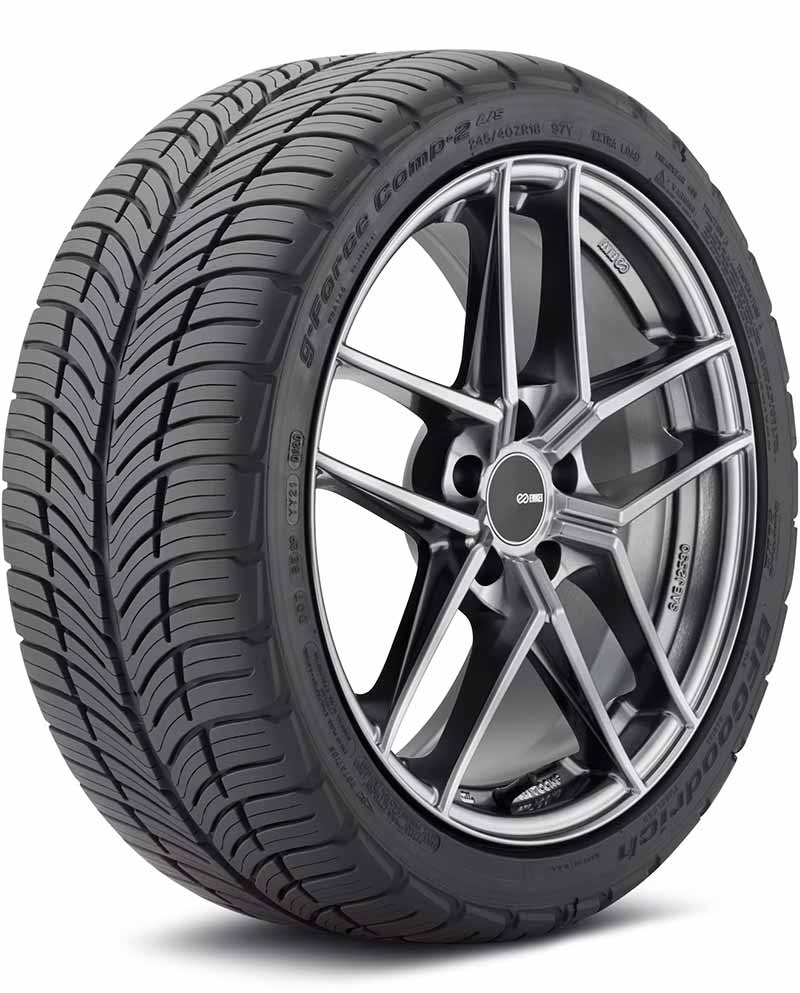As the owner of TireGrades.com, I get asked questions like these a lot.
What makes one tire better than another?
How do you know if a cheap tire is actually pretty good?
Are name-brand tires worth the money?
The answer is understanding a few tire specs and matching them to your OEM tire.
Your vehicle was sold by the manufacturer with a set of tires that met the needs of that type of car or truck very well. These are the OEM tires.
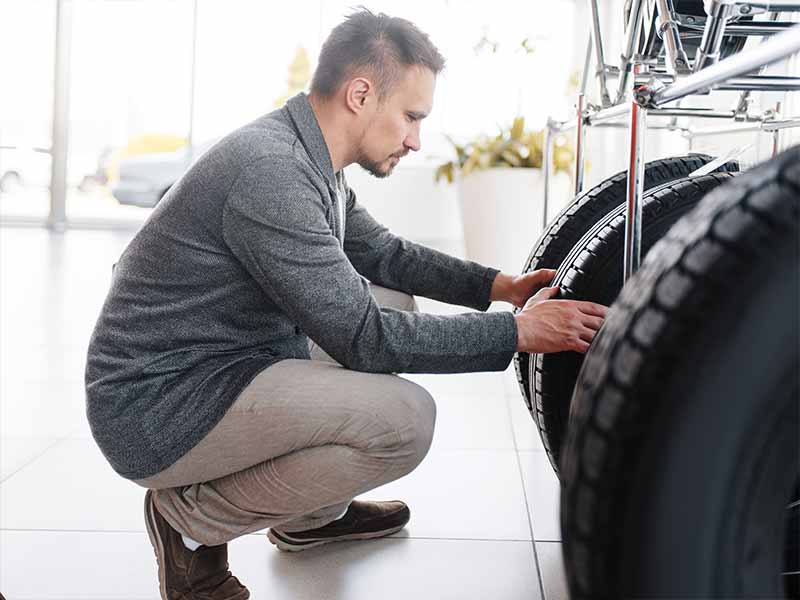
Choose a tire design that fits your driving style, typical road surface, preferences, and needs. For instance, I tend to drive a tad fast. I also live in Charlotte North Carolina where there is almost no snow. This means I don’t need a “Winter” or “All-Season” tire, although “All-Season” is still a great choice for this region. A high-performance “Summer” tire is a great choice for me.
But how do you know what the OEM tire specs are? How do you pick a tire design? How do I find a good deal?
It’s not as complicated as it might sound. Let’s break it down for you.
How To Buy Tires
1. Choose a tire design that meets your needs (ex: All-Season)
2. Match the OEM Size
3. Meet or Exceed the OEM Load Rating
4. Meet or Exceed the OEM Speed Rating
5. Meet or Exceed the OEM UTQG Ratings
6. Check the DOT Code to make sure the tire isn’t over 6 years old
What Should I Look For When Buying Tires?
Individual needs vary based on typical driving conditions, vehicle type, and vehicle use. What might be important to you might not be important to someone else. Here are some things to consider when buying tires for your vehicle.
What Is Your Driving Style?
- Do you seek a comfortable smooth ride?
- Do you like to take the turns a little faster than everyone else?
- Do you value safety over comfort?
What Type Of Road Surface Do You Typically Drive On?
- Do you deal with a lot of rain or snow?
- Do you mostly drive long distances at highway speeds?
- Do you often drive on poorly maintained or even gravel roads?
What Complaints Do You Have With Your Current Tires?
- Are the tires you have now loud?
- Are they harsh over potholes and rough roads?
- Do they struggle to maintain traction in corners or when it’s wet?
What Is Your Tire Budget?
Generally speaking, the best tires are more expensive. That said, there are some great tires available that cost much less than some of the big-name brands. If money is no object stick to the big names to save yourself some research time. Michelin comes out on top more often than not, but they also usually cost the most. If you’re trying to get the best tires you can for the lowest amount, keep reading and we’ll cover the key factors to pay attention to further below to ensure you’re getting the best quality possible and save a bundle.
Tire Designs
There are different types of tires for different needs. These different types of tires will have different tread patterns as well as different rubber compounds to help them better deal with the conditions the tire is designed to specialize in handling. As with most things in life, the different designs come with compromises to improve performance in other areas.

MICHELIN CrossClimate2 All-Season
Touring/All-Season Tires
Touring tires are the most common tire type. This tire design can deal well with all types of weather and road conditions. It has good wet and dry traction and can even deal with some snow and mud. These tires are ideal for cars and SUVs that will not be used for towing.
Touring tires come in many varieties such as all-season, summer, highway, and more. In general, these are good-performing tires with a focus on comfort and tread life.
Most people will be best suited with this jack-of-all-trades tire type. But as with anything that attempts to do everything, compromises must be made. This is why the other tire types exist.

Michelin Pilot Sport 4 S Summer
Performance Tires
Performance All-Season & Summer tires are designed to increase traction and cornering abilities. They also have a higher speed rating than regular All-Season tires. These tires typically sacrifice a little longevity for improved performance. Summer tires are not designed to deal with snow or other winter weather conditions. Performance All-Season tires are still designed to handle minor snow and winter weather. Ultra-High-Performance tires have the most aggressive street design for handling and cornering and have the most sticky rubber compounds. They also have the highest speed ratings. These aggressive designs will have the shortest tread life and also a higher cost. Like standard performance tires, high-performance tires come in All-Season and Summer versions to deal with weather properly in your region.

MICHELIN Defender LTX M/S All Season
All-Season & All-Terrain Truck Tires
Trucks and some SUVs need tires capable of handling heavier loads and therefore need tires designed with stronger sidewalls. All-Season Truck Tires are the equivalent of normal All-Season tires. They’re capable of working well in most conditions.
All-Terrain Truck Tires are designed for off-road duty. They can be used on the street but are designed to deal with dirt, rocks, sticks, and mud primarily.

Michelin X-Ice Xi3 Winter
Winter & Snow Tires
You can identify Winter and Snow Tires by the M&S designation or Mountain & Snowflake icons imprinted on the sidewall. Winter and Snow Tires are obviously designed to specifically deal with snow and winter conditions. Winter tires should always be replaced as a complete set. Replacing 1 or 2 winter tires will create a variation in grip around the car which can cause grip performance to become unpredictable on the already slippery snow and ice-covered roads.

MICHELIN Energy Saver All Season
Fuel-Efficient Tires
Low rolling-resistance tires can help with fuel efficiency or increase the range of a hybrid or electric car. Fuel-Efficient Tires can improve fuel consumption, whether gasoline, diesel, or electricity, saving you money and extending your range. Lower rolling resistance tires do sacrifice some grip performance but not so much that it is a concern. If you’re a performance enthusiast however you may want to skip purchasing fuel-efficient tires.

Michelin Primacy MXM4 Run Flat All-Season
Run-Flat Tires
Run-flat tires are tires that are capable of traveling a short distance at low speed without being inflated. They provide a buffer to allow you to make it home or to a local tire shop without becoming stranded.
Run-flat designs are a feature of some of the previously mentioned tire types but usually fairly limited. Some vehicle manufacturers specify run-flat tires for their cars or trucks. When buying new tires you don’t need to replace them with the exact tire that came on your car.
In the instance of a run-flat tire, you can save money if you choose tires without this feature. You will need to account for how to handle a flat tire situation however since cars equipped with run-flats don’t usually have a spare tire, or even space to add a spare tire.
Run-flat tires, aside from being more expensive and lacking in variety, are also less comfortable than traditional tires. To enable the tire to run while flat the sidewall has to be reinforced to allow it to hold up the vehicle without the help of air pressure. This prevents the tire from absorbing as much shock from rough roads and potholes.
If you like the idea of a run-flat tire and would like to add them to your car or truck that wasn’t fit with them when new you’ll need to ensure that you have a tire pressure monitoring system (TPMS). New cars come equipped with these systems and many older cars have them as well. A TPMS system can be retrofit to a car that didn’t originally come with one as well.
If you don’t have a tire pressure monitoring system and are using run-flat tires you likely won’t notice when you get a flat tire. The problem here is that you’ll continue driving at a higher than safe speed for the uninflated tire and its supporting sidewall will potentially catastrophically fail and cause a wreck. For this reason, you MUST have a tire pressure monitoring system installed if you have run-flat tires.
How To Read Tire Codes
Tire codes will tell you everything about a tire. By knowing the codes of your OEM tires you’ll be armed with everything you need to know to choose the right set of tires that fit and meet your needs.
How To Find Your Vehicle’s OEM Tires
OEM stands for Original Equipment Manufacturer. OEM tires are what your car or truck manufacturer specified and sold on your car or truck when it was new.
Car and truck manufacturers pick a set of tires to go on your vehicle to match the handling and load requirements and they try to match the typical use. OEM tires are usually a very good choice although they are often one of the most expensive options.
Whether you plan to replace your current tires with OEM tires or not, it’s good to know what they are so you can use them as a starting point for finding replacement tires.
Most websites that sell tires online include an extensive database of OEM tires. Using one of these is going to be the easiest way to figure out what your OEM tires are.
Finding Your Tire Size
This is probably the easiest part of choosing the right tires for your car or truck. Unless you’ve changed the size of the wheels on your vehicle you can just look in the drivers’ door jam and find the tire size you need. It’s usually listed on a sticker located on the end of the door or on the jam itself. This sticker will also list the recommended tire pressure for each tire.
If for some reason the tire size isn’t on your door jam you can look it up in the owner’s manual or online. Be sure to account for any options that may affect the tire size. Things to consider are upgraded wheel packages such as an off-road option or performance option.
You can also look at the tires themselves. The tire size will be listed on the sidewall. If you’re not the original owner or you’re unsure if the tires have been replaced with the proper tire size you’ll want to refer to one of the previous methods.
Tire Type, Size, & Ratings
The tire code will look something like the following:
P 235/45 R18 95 V
Starting from left to right, here’s what each of those letters and numbers means:
- Type – A general category for the tire to be used. Here are the available tire types:
- P is for Passenger vehicles
- LT is for Light Truck
- ST is for Special Trailer
- T is for Temporary spare tires
- Tread Width – The literal width of your tire (in mm) from the outer tire sidewall to the inner tire sidewall inside the wheel well.
- Aspect Ratio – This is the height of the tire sidewall. Sometimes referred to as the profile. The Aspect Ratio is a percentage of the Tread Width. So an Aspect Ratio of 50 means that the sidewall of the tire is 50% of the Tread Width.
- Construction – Almost all tires for cars and trucks these days are Radial. This means they are constructed of cords in a radial pattern. The other option is Bias Ply which is used on trailer tires or tires that need stronger sidewall construction most often.
- Diameter – This is the diameter of the wheel the tire is designed to be mounted on (in inches).
- Load Rating – An index number that refers to the amount of weight the tire can support. For instance, a Load Rating of 95 means the tire can support 1521 pounds. To get the Load Rating of the set of tires simply add the pounds each tire can support together. In this instance, a car with 4 Load Rating 95 tires can support 6084 pounds. Subtract the curb weight and you have the additional weight the tires are rated to support.
- Speed Rating – This letter represents a fixed maximum speed the vehicle can safely run at with this tire. In this case, a Speed Rating of V means you should not exceed 149mph with these tires. If this speed is exceeded the tires can overheat and cause a tire failure.
UTQG Codes
UTQG is an acronym for Federal Government’s Uniform Tire Quality Grading Standard that is used to categorize tire quality. It however doesn’t cover winter tires since these factors are very different in winter environments.
UTQG is an old measurement system that was is meant to help consumers better understand tire quality and performance but it honestly doesn’t help as much as it could. It does help some so it is definitely worth understanding when shopping for new tires.
A UTQG code may look like this:
500AA
But it is more often spelled out in each individual rating like this:
- Treadwear: 500
- Traction: A
- Temperature: A
The UTQG codes cover 3 main factors:
- Treadwear – The government sets a minimum treadwear which is measured as 100. Manufacturers will list a number at or above this number. The numbers usually are several multiples beyond the minimum government standard of 100. This number doesn’t relate to the mileage that a tire should last since many factors affect a tire’s actual longevity. It does help give a more abstract understanding of durability when comparing tires, however.
- Traction – UTQG Traction refers to a tire’s traction in the wet. There are 4 Traction Grades:
- AA – A traction grade of AA is the best possible rating and only ultra-high performance tires achieve this grade.
- A – A Traction grade of A is by far the most common rating that a tire will meet and is very good. Because almost all tires fall within this grade the grading system for traction isn’t very helpful. You aren’t likely to come across many tires that don’t meet this standard.
- B – A small percentage of tires don’t make an A rating and fall into the B rating category. Given that it is common for tires to meet the A rating I don’t recommend purchasing any tire in the B category for a daily-driven vehicle.
- C – It is extremely unlikely you’ll come across a tire with a C traction rating. If you do, I can highly recommend considering an alternative.
- Temperature Resistance – Temperature Resistance is essentially a measurement of how well a tire can resist heat buildup as speeds increase. The forces a tire undergoes at high speeds are quite incredible and heat buildup can be devastating to a tire quickly if it exceeds its capability to resist excessive temperatures.
- A – The best tires fall in the Grade A Temperature Resistance category. You should feel very confident that any A-grade tire will make for a very good daily driven tire, even if you do quite a bit of highway driving and have a led foot.
- B – The majority of tires manufactured today fall in the B-grade category. These are good tires and should pose no concerns.
- C – Very few tires fall in the C-Grade Temperature Rating category. Given that the vast majority of tires meet a grade of B or better, you should be able to find a very good and inexpensive tire with a grade above C.
Be careful buying tires from Amazon, Ebay, Craigslist, Facebook Marketplace, etc.
TireGrades Expert Tip
I’ve seen tires for sale that are unused but due to age.
DOT Code (Serial Number)
Department of Transportation Codes provide a lot of information you probably don’t really need to know, but they do offer one key bit of information – the date of manufacture.
Knowing the date your tires were manufactured can be important if you happen to be dealing with tires that are older. Tires that are 6 years old are recommended to be replaced whether they’ve been used or not. Oxygen in the air reacts with the rubber and causes it to break down over time.
While tires that are 6 years old are recommended to be replaced, it’s not 100% necessary. If tires are 10 years old you definitely want to replace them. I would recommend not keeping any tire longer than 6 years no matter its condition.
If you’re buying a new tire you want to make sure that it really is new, or at least no more than a couple of years old.
A DOT code will look like the following:
DOT B9 EL 04EX 4118
This string of letters and numbers is mostly used for recall purposes. It indicates several things specific to the tire’s manufacture, most importantly to you is the date of manufacture. The last 4 digits of the DOT Code are the date of manufacture. The first half of this 4 digit code is the week of manufacture and the last half is the year of manufacture. For instance, the example above indicates the tire was manufactured in the 41st week of 2018.
Cheap Vs Expensive Tires
Who wouldn’t like to save a few bucks when buying tires. New tires are expensive. This is for good reason though. They’re extremely important for safety as well as driving comfort. That said, you can often find comparable performance for less money.
If you want to find good quality tires for less money the best thing to do is compare the UTQG ratings, Load Ratings, and Speed Ratings of tires of the same type (for instance All-Season) and the same size (for instance P 235/45 R18 95 V). UTQG ratings are uniform when comparing tires of the same type. While the ranges are somewhat broad, these ratings can give you a reasonable idea of equivalent tire quality.
You should also read reviews on the specific tire model you’re considering as well. You hopefully can find reviews of that specific tire by both professional reviewers as well as consumers. I will note that you should take consumer reviews with a grain of salt.
There are many factors that affect tire wear and performance. It’s not uncommon for people to not rotate their tires regularly or ensure their tire pressures are within specification often. We all lead busy lives and sometimes forget or procrastinate on life’s tasks. I’m not throwing stones here. I’m an offender just like everyone else. Regardless, when proper tire maintenance isn’t performed, an otherwise exceptional tire can underperform and/or prematurely fail.
In the end, you’re going to get a better quality tire when you spend more money. That doesn’t mean you need all that performance. You could get a nearly as good tire for a fraction of the price. If you’re opting for tires that cost substantially less but are equivalent in UTQG chances are the more expensive tire is still better.
There is a lot of margin in the UTQG tire ratings. You’ll still get a good quality tire but it may not wear as long or grip quite as well as a more expensive tire. This isn’t necessarily bad and may be worth the savings. Ultimately you’ll have to decide whether saving money is worth sacrificing a bit of performance and possibly having to replace the tires a little more quickly.
Common Compromises When Buying Cheaper Tires
- Durability – When spending less on a tire it most likely will not last quite as long as the more expensive tire with the same UTQG. UTQG can give a good general idea of tire wear but it doesn’t mimic real-world conditions.
- Handling – Lesser expensive tires typically have less sophisticated tread patterns and less grippy rubber compounds. This doesn’t mean they are dangerous by any means but it does mean when compared to a more expensive tire with the same UTQG it is probably giving up a small amount of traction.
- Braking Distance – Just like with handling, if a tire is giving up a little traction for a lower cost of production it will increase the braking distance. While braking isn’t solely depending on tires obviously, tires do play a key role in braking.
- Comfort – Premium rubber compounds and tire construction designs usually help improve ride comfort. Less-compliant tires and more rigid construction designs may reduce costs but at the expense of ride smoothness.
- Noise – Arguably the most or least important compromise depending on your perspective is tire noise. While added noise doesn’t affect the durability, handling, braking distance, or ride comfort, it can be a deal-breaker for some. A loud and droning tire can drive some insane while others may not even notice the additional noise. Typically less expensive tires will be louder so if you’re sensitive to this keep it in mind when deciding how much you’re willing to spend.
Is It Worth Paying More For Tires?
Not necessarily. Just because you’re paying more for a tire doesn’t mean that it performs better. There are many factors manufacturers consider when pricing tires. Cost is just one. For instance, lowering the price of a tire slightly can significantly improve sales of a tire that is already better than the competition but is not perceived to be better.
You can’t blindly assume that if you pay less the tire is worse. It’s always wise to compare specs and read tire reviews to find out a little more about how well a specific tire performs.
Below is a very insightful video breakdown of a AAA Tire Study by the Engineering Explained YouTube Channel.
Are Cheap Tires Dangerous?
All new tires must meet Department Of Transportation (DOT) requirements so any new tire, unless due to defect, should be safe. Just because you haven’t heard of the brand or the tire is made in China doesn’t mean it’s a bad tire or dangerous. There are many mid-grade tires from companies you may not have heard of that are exceptional.
Reading reviews and comparing UTQG ratings can help you better understand variations between different brands of tire.
Cost Per Mile Calculator
The price of an individual tire when compared to a competing tire can be misleading. A more expensive tire that has a warranty guaranteeing it will last longer may be a better deal.
To better compare tires on an apples-to-apples basis, input the price of an individual tire and the mileage guarantee of the tire manufacturer’s tire warranty to determine how much that tire will cost for every mile you drive with them.
How To Save Money When Buying Tires
Is It Cheaper To Order New Tires Online?
There is a wide variety of places you can buy tires. From large tire chains, local mom and pop shops, to discount warehouse stores.
It seems conventional wisdom these days is that Costco is the cheapest place to buy tires, but that isn’t the case.
Buying tires online is the cheapest way to buy tires. The reason is that you can get access to lesser-known brands that don’t have the same brand recognition and retailers don’t want to use precious warehouse space on-site or educate customers about them.
If you show up at a local tire shop to buy new tires, chances are they aren’t going to have the right tire options to meet your needs or possibly even tires that fit. If you want the exact tires your car or truck came with you will likely have to order them anyway.
How To Buy Tires Online
Start with the OEM tire for your vehicle and match the specifications of that tire and its size to the type of tire that best suits your driving needs.
Here’s a real-world breakdown of tire prices of replacement tires for a Tesla Model 3 Dual Motor with 18-inch wheels. The OEM tire is the Michelin Primacy MXM4 in 235/45 18 with a UTQG of 500AA, Load Rating of 98, and Speed Rating of W.
I searched for new tires online at all of the major tire retailers and a few of the lesser-known ones as well. I’ve listed the OEM tire, the cheapest tire that is the same size as the OEM tire, and the cheapest tire that meets or exceeds the specifications of the OEM tire.
I did not limit the selections to a particular type of tire such as efficiency, performance, etc. Most of the tires below are all-season tires which are general commuter tires.
NOTE: Tire prices change often so these numbers are likely not accurate at the time you’re reading this article.
| Cheapest Tire Of The Same Size | Cheapest OEM UTQG-Equivalent Or Better | |
| Discount Tire Direct OEM Tire: $256.15 | $82.95 NANKANG TIRE NS-25 A/S UHP UTQG: 500AA Load Rating: 98 Speed Rating: H | $143.00 KUMHO ECSTA PA51 UTQG: 500AAA Load Rating: 98 Speed Rating: W |
| Tire Rack OEM Tire: $268.99 | $106.25 Riken Raptor VR UTQG: 520AA Load Rating: 94 Speed Rating: V | $106.90 Laufenn S FIT AS UTQG: 500AA Load Rating: 98 Speed Rating: W |
| Costco OEM Tire: No Stock – No Price | $169.99 BFGoodrich G-Force COMP-2 A/S PLUS UTQG: 400AA Load Rating: 98 Speed Rating: W | $196.99 Bridgestone POTENZA RE980AS UTQG: 500AAA Load Rating: 98 Speed Rating: W |
| BJ’s Warehouse OEM Tire: Not Available | $171.99 BFGoodrich G-Force COMP-2 A/S PLUS UTQG: 400AA Load Rating: 98 Speed Rating: W | None Meet OEM Specs |
| Sam’s Club OEM Tire: $268.99 | $109.56 Nexen N’Fera AU7 UTQG: 500AAA Load Rating: 98 Speed Rating: W | $109.56 Nexen N’Fera AU7 UTQG: 500AAA Load Rating: 98 Speed Rating: W |
| Walmart OEM Tire: $215.77 | $71.94 Cosmo MuchoMacho UTQG: 300AAA Load Rating: 98 Speed Rating: Y | $76.91 Thunderer Mach III R701 UTQG: 500AA Load Rating: 98 Speed Rating: W |
| Priority Tire OEM Tire: $294.99 | $73.93 FORTUNE VIENTO FSR702 UTQG: Unlisted Load Rating: 98 Speed Rating: Y | $79.99 Landgolden LG27 UTQG: 500AA Load Rating: 98 Speed Rating: W |
| Giga-Tires OEM Tire: $242.68 | $60.98 Fullrun F7000 UTQG: 380AA Load Rating: 98 Speed Rating: W | $65.80 Landgolden LG27 UTQG: 500AA Load Rating: 98 Speed Rating: W |
| Tire Buyer OEM Tire: $268.99 | $147.98 Nexen N’Fera AU7 UTQG: 500AAA Load Rating: 98 Speed Rating: W | $147.98 Nexen N’Fera AU7 UTQG: 500AAA Load Rating: 98 Speed Rating: W |
This exercise highlights the way you might go about selecting tires for your vehicle. Matching the size and ratings of the OEM set of tires is an excellent way of buying tires online to find a brand that offers a good value.
Giga-Tires.com offers the Landgolden LG27 which matches the OEM Tire Size, UTQG, Load, and Speed Ratings. I’m not suggesting that these budget tires will meet the performance of the Michilens but they are within the safety margins of the load and speed ratings of the Michilens and based on the government uniform tire quality grade it should wear and perform “somewhat” similarly to the OEM tires for far less money.
In the real world, it is hard to know how far apart the performance will differ from the OEM Michelin’s. Matching specs should keep things within a reasonable margin. To bridge the gap even more I recommend reading as many reviews as possible.
Tire Deals, Coupons, Rebates, And Promotions
- Discount Tire Direct – Promotions
- Tire Rack – Special Offers
- TireBuyer – Deals
- PriorityTire – Current Deals
- Goodyear – Coupons
- Giga-Tires – Rebates
Is It Better To Buy Tires From A Dealer?
You’ll usually pay more for new tires when buying from a car dealer. It may be more likely that they’ll have the OEM tire for your car or truck in stock though. If you’re not in a position to wait for tires to be shipped and you want to maintain OEM tires on your vehicle, a new car dealer for your make of car or truck is probably a good choice.
OEM Tires Vs Aftermarket Tires
OEM stands for Original Equipment Manufacturer. OEM tires are simply the tires that the manufacturer installed on the car when it was new. The manufacturer of your car not only selects a manufacturer for the tires that go on your car but they decide on the model of the tire as well as the size.
For some cars and trucks, the manufacturer will work with a specific tire manufacturer to design tires that work best for that specific car or truck. This isn’t usually necessary and it’s usually more than adequate for the vehicle manufacturer to pick a make and model of tire that already exists. Even if a manufacturer has done this for a car or truck it doesn’t mean that different tires won’t work or even work well.
Sometimes there simply aren’t any tires on the market from any manufacturer that are the most appropriate size at the time of the vehicle launch. Often afterward, other tire manufacturers will begin making tires in that size now that there is a market for that size of tire.
For most people, there is no reason to purchase the exact same tires the manufacturer put on the car when they bought it. There’s a good chance the only reason that tire was put on the car when it was sold new is that the vehicle manufacturer was able to negotiate the most favorable deal with that tire manufacturer.
While the vehicle manufacturer won’t sell a car with a low-quality tire, that doesn’t mean that there aren’t other equally good or even better tires that you can buy aftermarket for your car or truck.
What Is The Best Time Of Year To Buy Tires?
It’s common for there to be tire promotions in the spring and fall. April is a popular month for tire promotions as people may be preparing for road trips coming up over the summer months. October is another very common month for tire promotions. October is just prior to the icy and snowy conditions of winter and it is common for people to get new tires in preparation.
It’s worth pointing out that you shouldn’t wait to buy new tires until you have worn the tires down to the wear bar. When you’re down to the wear bar you only have 2/32″ of an inch of tread left and it makes driving in wet and inclement weather very dangerous. Tires are at their best when new and progressively get worse.
Plan ahead and buy tires when you can afford to do so and before you need new tires. You can store tires if you must. Tires shouldn’t be used after they have reached 6 years of age. It doesn’t matter if they have been used or have just sat for that entire period of time.
Tires slowly release antiozonant to help protect the rubber from breaking down too quickly. This only prevents degradation of the elastomers and polymers for just so long and after 6 years tires start to become unsafe to use.
If you do store your tires it’s smart to protect them by placing them in tire storage bags. This will protect the tires from contact with ozone and keep the protective antiozonant gasses in the bag with the tires.
Resources
Below are some links you may find helpful when learning about tires
